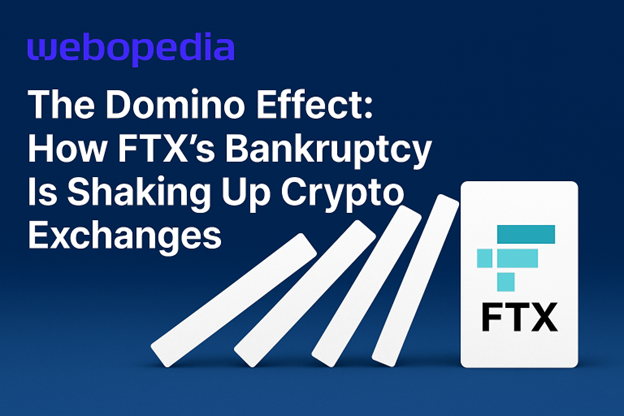The news that FTX filed a lawsuit against NFT Stars and Delysium for failing to deliver tokens per the agreements reignited a debate on how its bankruptcy affects the crypto exchanges. The 2022 bombshell that one of the largest crypto exchanges was filing for bankruptcy shook the crypto world to the core. The collapse of FTX is described by prosecutors as “one of the biggest financial frauds in American history.” Even though most of the dust has settled, the aftermath of FTX’s bankruptcy is still being felt today, almost three years later
In the post-FTX world, crypto exchanges are scrambling to rebuild trust, reinforce regulations, and secure their platforms against a future collapse of similar magnitude.
A Crisis of Confidence
The immediate effect of the FTX collapse was panic that spread like wildfire throughout the crypto community. FTX, the second-largest crypto exchange by trading volume, was an icon in the crypto world. Its founder, Sam Bankman-Fried, was hailed as a wunderkind and one of the most admired persons in the world. Suddenly, all that changed.
When the house of cards fell and billions of dollars disappeared, the initial shock was soon replaced with anger. All of a sudden, everybody started asking the same question: How safe are my assets on other exchanges?
This crisis of confidence hit centralized exchanges (CEXs) hardest. Retail users began withdrawing their funds en masse, not necessarily because they mistrusted a specific platform, but in fear that the FTX collapse would trigger a chain reaction, dragging every other exchange with it.
After all, if a giant like FTX could crash and burn like that, what could users of other, smaller platforms expect?
Proof-of-reserves became a buzzword almost immediately, with many platforms rushing to demonstrate transparency and proof that they actually hold the assets they claim they have.
Regulatory Pressure
Such a massive failure couldn’t pass without an equally massive governmental reaction. Before the FTX scandal, crypto exchanges operated in a regulatory gray area, with spotty oversight. That was all about to change. Regulatory bodies around the globe received a brutal wake-up call and immediately sprang into action.
In the US, the Securities and Exchange Commission (SEC) and the Commodity Futures Trading Commission (CFTC) initiated a number of lawsuits and other procedures against crypto platforms deemed not to play by the rules.
The UK, Singapore, and Australia put a slew of crypto-specific legislation on the fast track, trying to prevent another disaster. The EU also followed suit, passing the Markets in Crypto-Assets Regulation (MiCA).
The end result of these new laws is that crypto exchanges today operate under increased scrutiny, higher compliance costs, and increased liability.
Consolidation of the Industry
Many experts argue that the increased legal scrutiny was inevitable, regardless of the FTX bankruptcy. However, the sudden increase in pressure caused several smaller platforms to fold. They are either closing up shop or getting swallowed by bigger fish.
The resulting consolidation of the industry could lead to a healthier ecosystem long term. In the short term, though, it caused a significant reduction in both competition and innovation.
We could easily end up with several massive players dominating the market, and the memories of “too-big-to-fail” institutions from 2008 are still vivid in our collective memory.
What Users Should Know
In the post-FTX world, crypto users are becoming not only more cautious but also more educated, which is one of the rare positive effects of the FTX fiasco. The saying “not your keys, not your coins” has never felt more relevant or taken more seriously. Instead of keeping all their eggs in one basket, users are diversifying their assets between several solutions.
Many are also turning to Webopedia’s recommendations on crypto exchanges when choosing a platform. Instead of focusing on just chasing the highest yields or the flashiest interfaces like before, now they are trying to gauge transparency, security protocols, and regulatory compliance of each exchange before making a decision. Insistence on safety, accountability, and a company’s track record will hopefully drastically improve the overall safety of all crypto platforms.
Conclusion
The bankruptcy of FTX will go down in history as a pivotal event in the development of crypto. It exposed systemic fragility and caused a massive rethink of the way crypto exchanges operate. Some experts would even go as far as to say that it marked the end of the Wild West era in the crypto world. Despite the grief it caused, in the end, it may be judged as a net positive if it causes a much-needed change in the crypto community.
Oliver Dale
Editor-in-Chief of CoinCentral and founder of Kooc Media, A UK-Based Online Media Company. Believer in Open-Source Software, Blockchain Technology & a Free and Fair Internet for all. His writing has been quoted by Nasdaq, Dow Jones, Investopedia, The New Yorker, Forbes, Techcrunch & More. Contact Oliver@coincentral.com















